Mogogo, Jebena & Tsahli (ምልዳይ ሞጎጎ፡ ጀበናን ጻሕልን
Eritrean and Ethiopian cuisines are rich in flavors, aromas, and traditional cooking methods that have been passed down through generations. Some of the most iconic pottery t tools in these culinary traditions come in different forms and shapes such as mogogo (መጎጎ) or mitad (ምጣድ) for baking injera, kitcha and himbasha; Tsahli (ጻሕሊ) or shekla (ሸክላ) for stews, E’tro (ዕትሮ) for preserving water and Jebena (ጀበና) for coffee among other things. These pottery are not just cooking vessels; they are integral to the unique tastes and textures of Eritrean and Ethiopian dishes. Let’s explore the significance, benefits, and traditional uses of clay pots in these cuisines and how to season a new clay pot.
Historical Significance
Clay pots have been used in Eritrean and Ethiopian cooking for centuries. They are traditionally handmade, often by local artisans, using locally sourced clay. The process of making these pots is labor-intensive and requires great skill, reflecting the cultural heritage and craftsmanship of the region. For example, Jebena made in Keren (a city in Eritrea) is considered the best compared to other areas. Cooking in clay pots is more than a method; it’s a tradition that connects the present with the past, preserving the essence of authentic Eritrean and Ethiopian flavors.
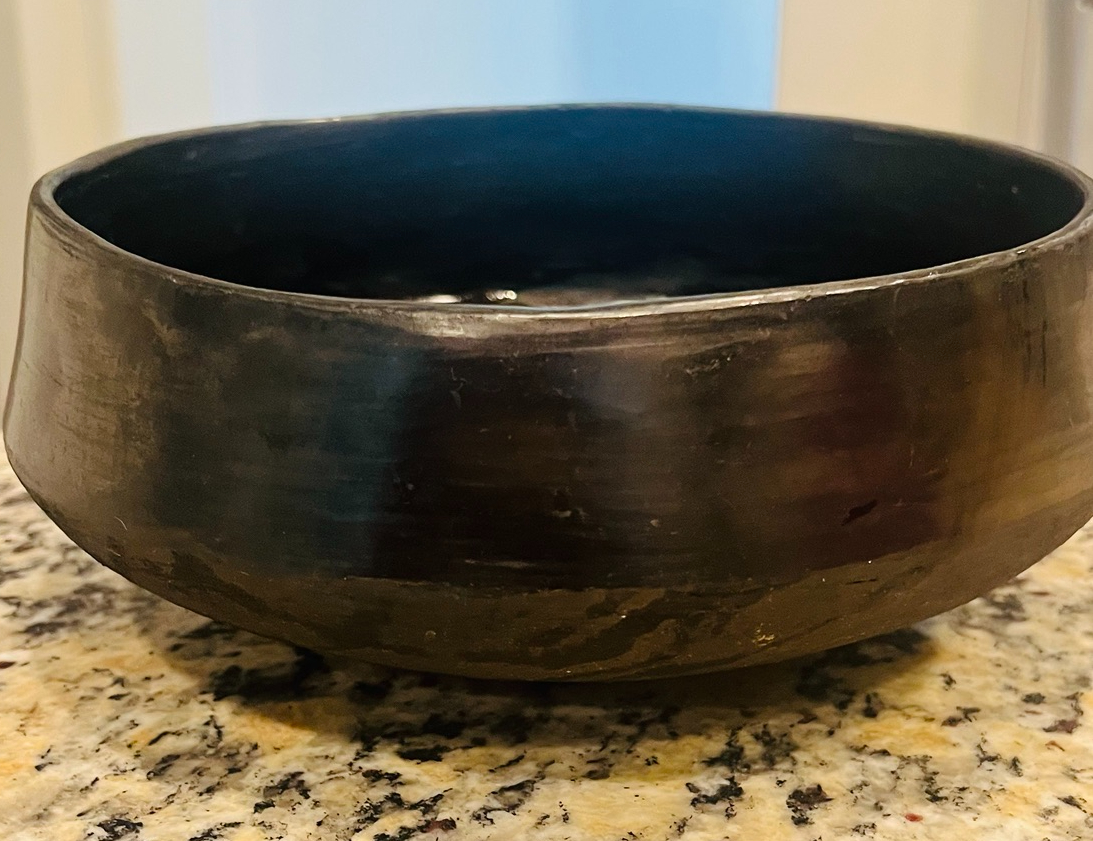
Benefits of Using Clay Pots
- Enhanced Flavor: Clay pots impart a unique earthy flavor to food that is difficult to replicate with metal or other types of cookware. The porous nature of clay allows for slow, even cooking, which enhances the taste of the ingredients.
- Nutrient Retention: The slow cooking process helps retain the nutrients in the food, making meals healthier. Unlike metal pots, clay does not leach any chemicals into the food, ensuring a pure cooking process.
- Moisture Preservation: Clay pots naturally retain moisture, preventing dishes from drying out. This is particularly important for stews and sauces, which are staple components of Eritrean and Ethiopian meals.
- Heat Distribution: Clay pots distribute heat evenly, which is essential for dishes that require long simmering times. This even heat distribution ensures that the food is cooked thoroughly and consistently.
Traditional Uses of Clay Pots
Among others, some of the most common uses of clay pots or kitchen wares are:
- Injera: Injera, a staple in both Eritrean and Ethiopian cuisine, is a sourdough flatbread with a spongy texture. It is traditionally cooked on a clay griddle known as a “mogogo” or “mitad.” The clay griddle is heated (either over an open flame traditionally or electrically), and the batter is poured onto its surface. The porous nature of the clay griddle gives injera its characteristic texture and flavor.
- Stews and Sauces: Clay pots, known as “Tsahli” or “shekla,” are essential for cooking traditional stews such as Tsebhi Derho/doro wat/Chicken Stew and “shiro” (chickpea stew). These dishes require slow cooking to blend the spices and ingredients perfectly. The clay pot’s ability to retain and evenly distribute heat makes it ideal for simmering these rich, flavorful stews.
- Coffee Ceremony: The Eritrean and Ethiopian coffee ceremony, an important cultural ritual, uses a clay coffee pot called a “jebena.” Coffee beans are roasted, ground, and brewed in the jebena, producing a rich, aromatic coffee that is central to social gatherings.
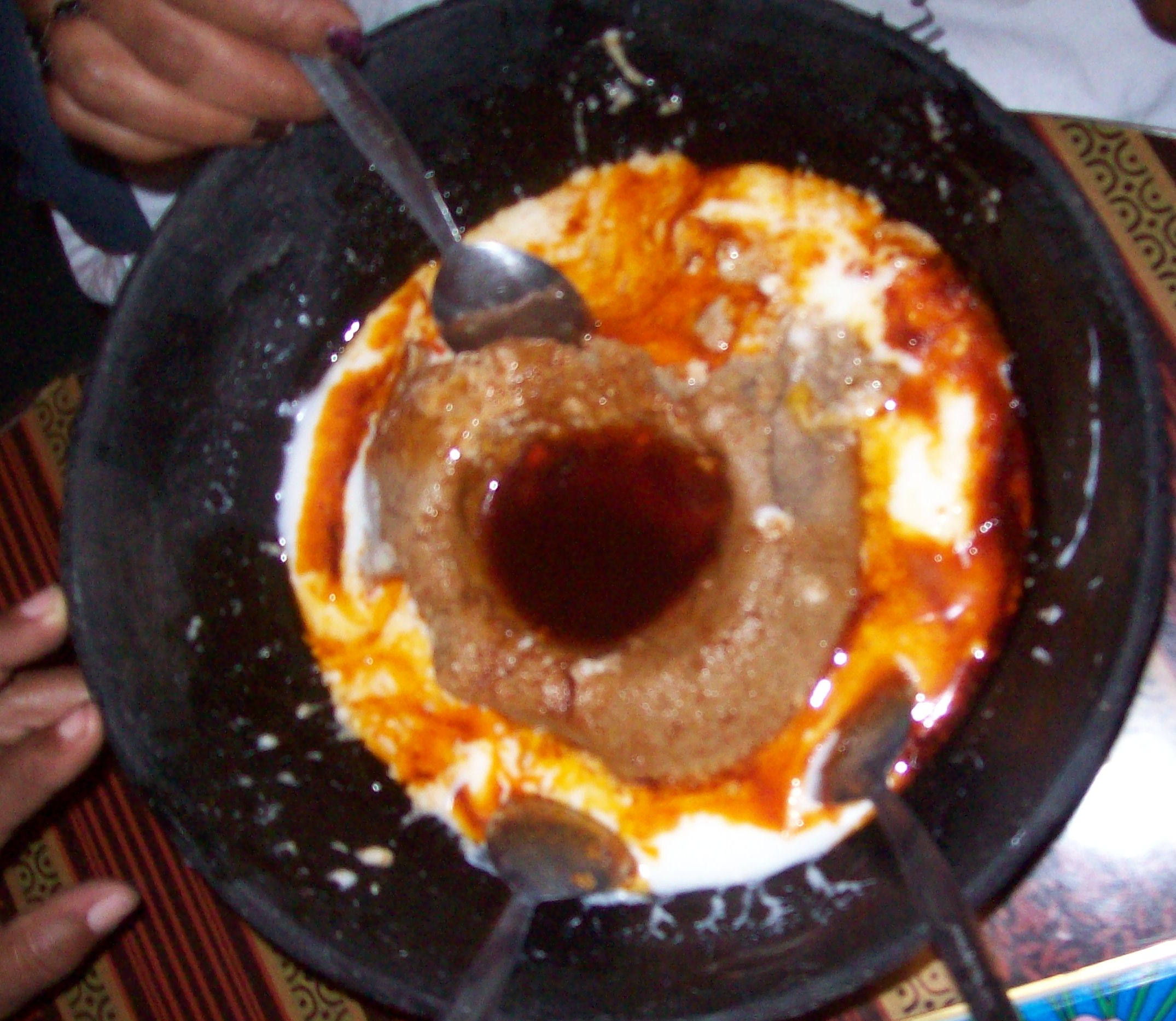
Why Season a Clay Pot
Clay pots are porous, and seasoning them fills these pores with oil, creating a natural non-stick surface. This process also helps to:
- Prevent Cracks: Seasoning reinforces the pot, making it less likely to crack during cooking.
- Enhance Flavor: Over time, a seasoned pot absorbs the flavors of the dishes you cook, adding depth and richness to your meals.
- Extend Lifespan: Proper seasoning ensures your clay pot remains in good condition for years.
How to Season a Clap Pot: A Step by Step guide
- Seasoning a Mogogo/Mitad/Injera Griddle
Most mogogos in the US are non-stick iron griddles. If by any chance you get one from back home made of clay, the easy way to season it is by using whole castor beans.
- Preheat the mogogo.
- Crush the castor beans with a mortar and pestle. Carefully spread around the surface of the griddle/mogogo ensuring the surface is fully covered by the castor.
- The oil from the castor will start melting on the surface enabling the clay to absorb the oil.
- Let it bake for an hour, mixing the castor occasionally.
2. Seasoning a Jebena/Coffee Pot
There are different ways to season a jebena. From my personal experience, I find that jebenas from certain parts of Eritrea and Ethiopia are well made and don’t crack when seasoning, while others easily crack, which defeats the purpose.
If your jebena is not well made (i.e. if it’s not hardened properly during its production), follow the steps below:
- Using a soft cloth or paper towel, apply a thin layer of cooking oil to the outside surface. The oil will penetrate the clay.
- Preheat your oven to 350°F (175°C). Place the oiled jebena/coffee pot in the oven and bake for 1-2 hours. This process helps the oil to penetrate deeply into the clay and harden, forming a durable, non-stick coating.
- You may notice some smoke or smell as the oil bakes, which is normal.
- After baking, turn off the oven and let the pot cool down gradually inside the oven. Rapid temperature changes can cause the clay to crack, so it’s essential to let the pot cool slowly.
Once the jebena cools down, proceed with the seasoning process.
Once you are ready to season your jebena, you can use leftover coffee:
- Pour 1-2 cups of coffee in your jebena.
- Let it boil on a charcoal stove (preferable) or on a stovetop on low heat for 30 minutes.
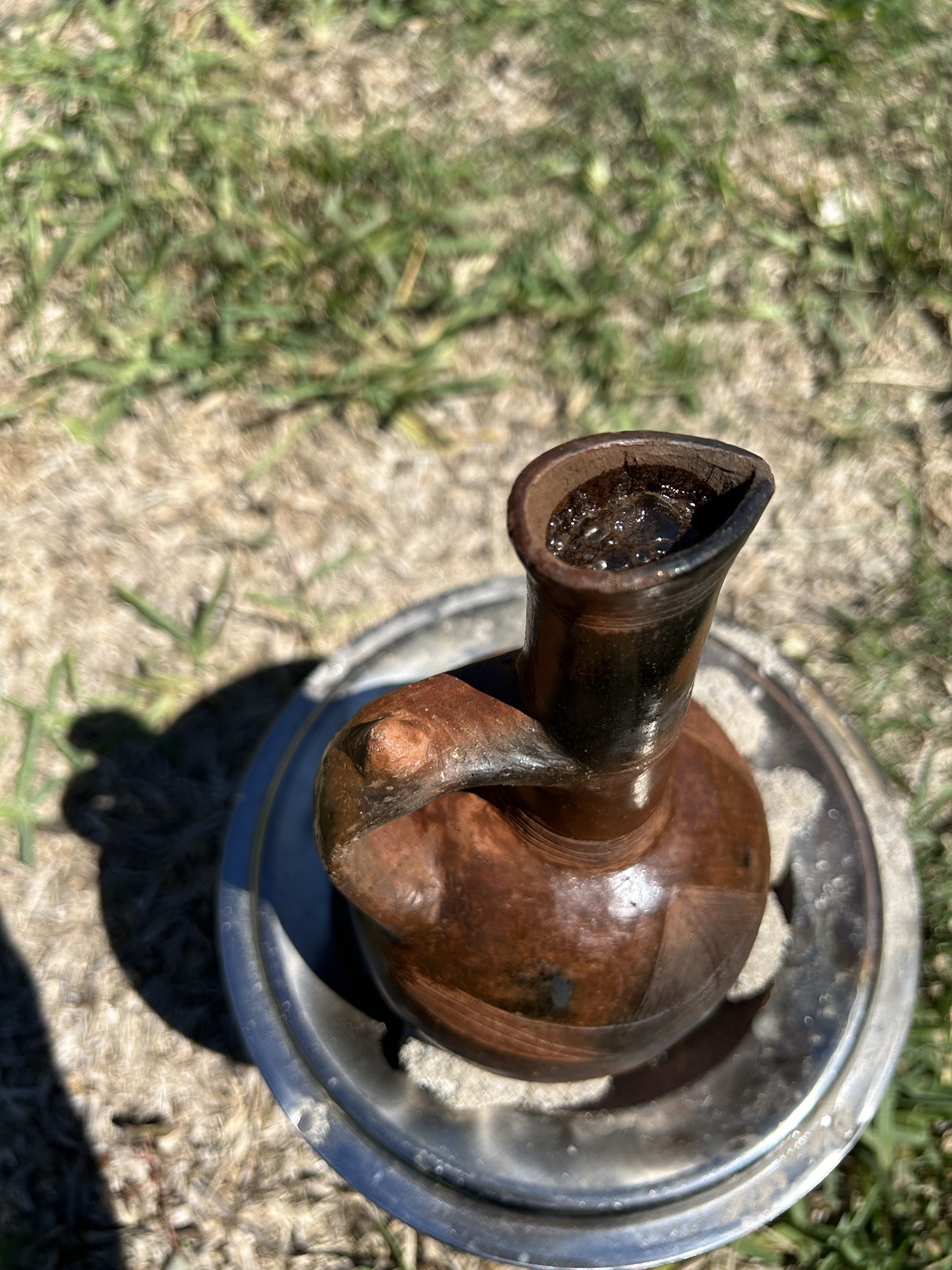
OR use water and salt:
- Pour 1-2 cups of warm water in your jebena.
- Add 2 tablespoons of salt.
- Let it boil on a charcoal stove (preferable) or on a stovetop on low heat for 30 minutes.
At first, you’ll notice a smell of clay when the water/coffee boils. Repeat the steps for better results.
3. Seasoning Tsahli/Shekla
Tsahli is a clay pot used for cooking stew. They vary in size depending on the dish that’ll be cooked. Here is a method familiar to me, which my mom used:
- Cut 1-2 medium-sized Roma tomatoes or any other tomatoes in half.
- Apply oil: using a soft cloth or paper towel, apply a thin layer of cooking oil to the entire surface, both inside and outside, except the bottom. The oil will penetrate the clay.
- Place the Tsahli on a charcoal stove or on a low heat stovetop.
- Add 1 tablespoon of cooking oil inside the Tsahli and place the tomatoes.
- Using a wooden spoon, spread the tomatoes inside the Tsahli.
- Let it simmer while occasionally basting the tomatoes all over the Tsahli to avoid food burn.
After 30-45 minutes, turn off the stove and let it cool.
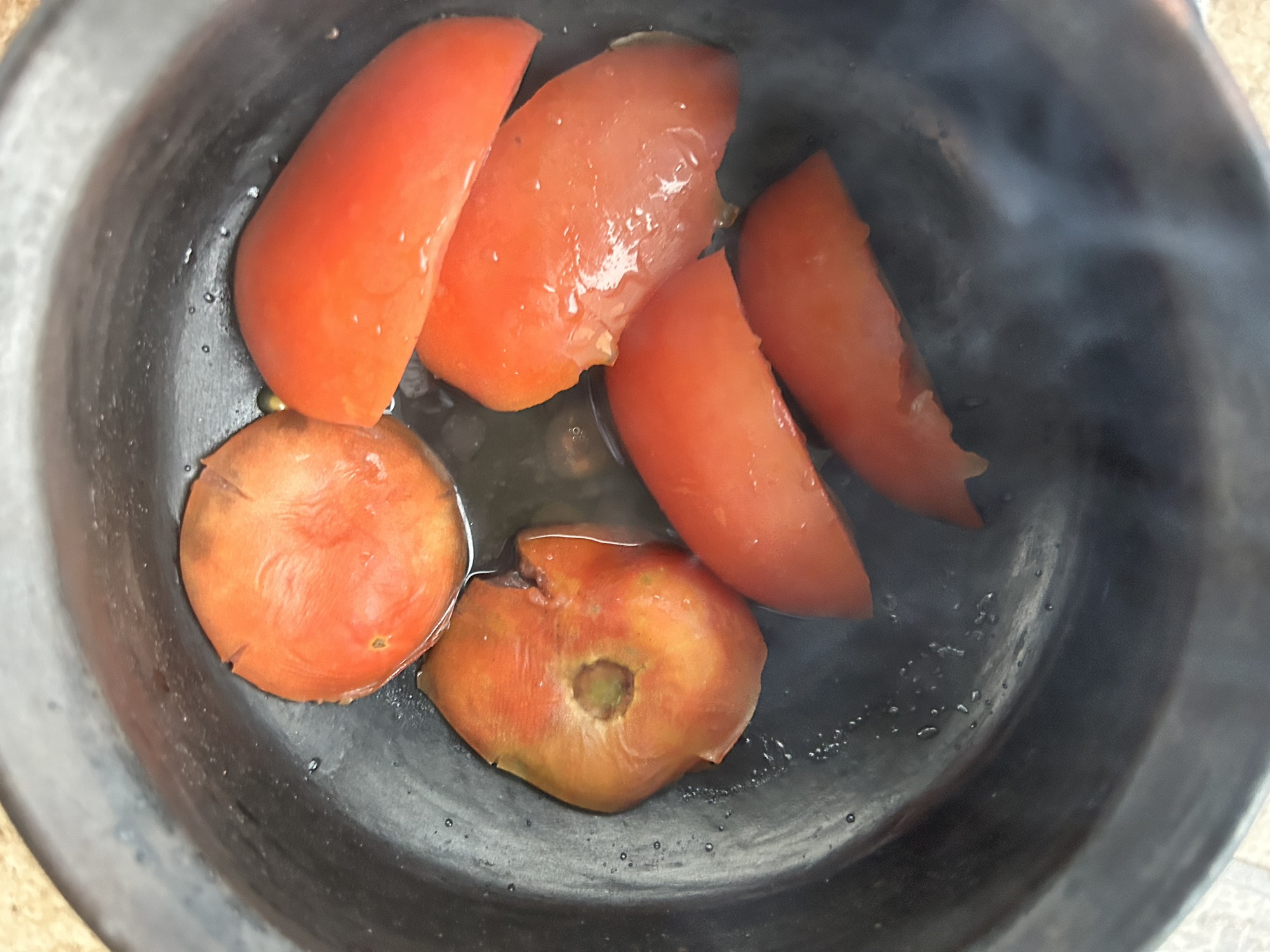
Maintaining and Caring for Clay Pots
- Seasoning: New clay pots should be seasoned before use to prevent cracking and enhance their non-stick properties. This typically involves soaking the pot in water and then baking it with a thin layer of oil.
- Cleaning: Clean clay pots/coffee pots with warm water, baking soda, and a sponge (outer surface for Jebena). Avoid using soap, as it can be absorbed by the porous clay and affect the taste of future dishes or coffee.
- Storage: Ensure the pots are completely dry before storing to prevent mold growth. Store them in a cool, dry place.
Conclusion
Clay pots are indispensable in Eritrean and Ethiopian cooking, not just for their practicality but for the depth of flavor and tradition they bring to the table. Whether you’re making injera, simmering a hearty stew, or brewing coffee, clay pots help create authentic and delicious dishes that honor centuries-old culinary practices. Embracing these traditional methods can enrich your cooking experience and connect you with the rich cultural heritage of Eritrea and Ethiopia.1
- My heartfelt gratitude to Salem Ghirmai for graciously sharing her photos of the Tsahli with woven artifacts for this blog. ↩︎

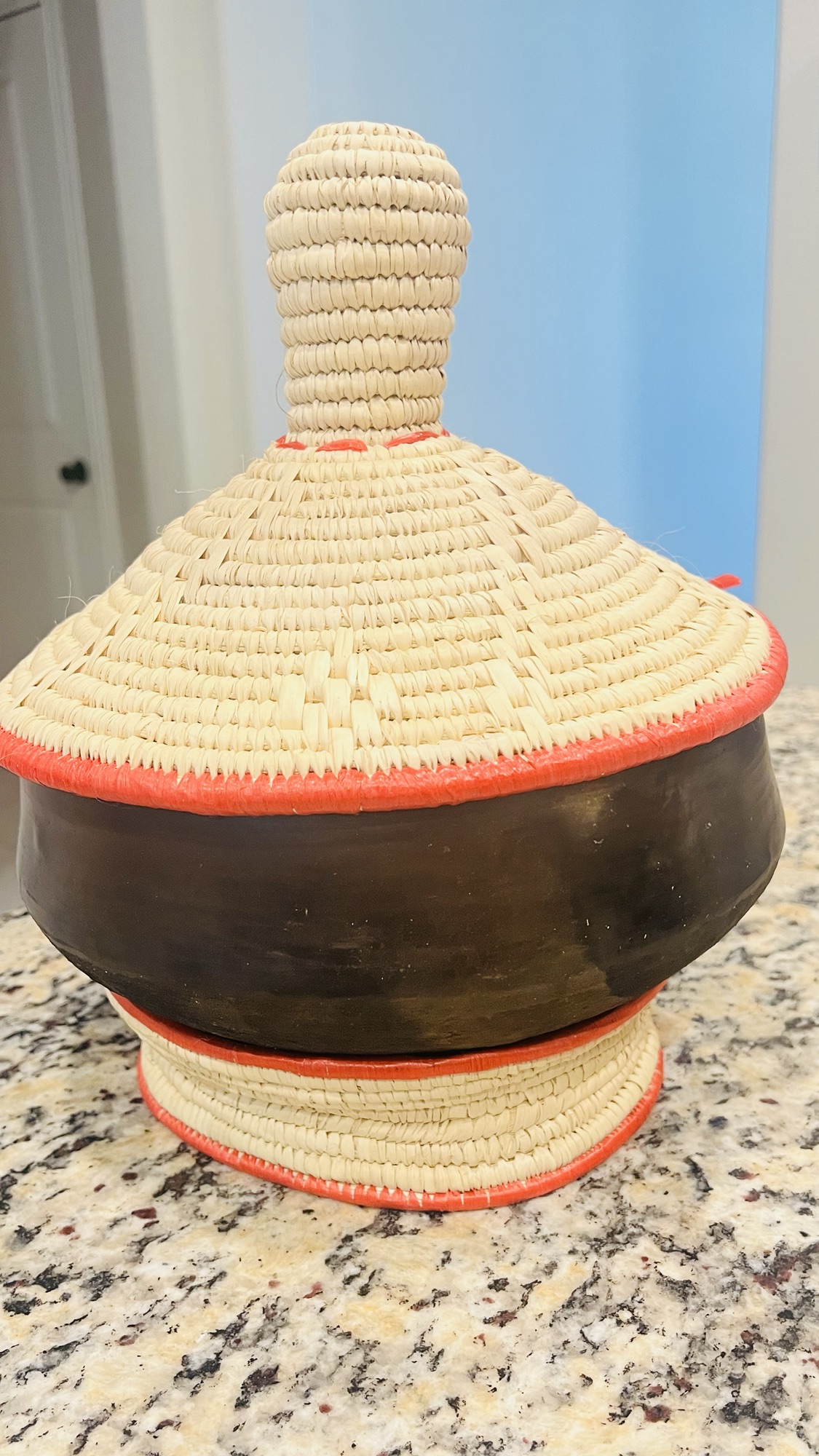
Leave a Reply